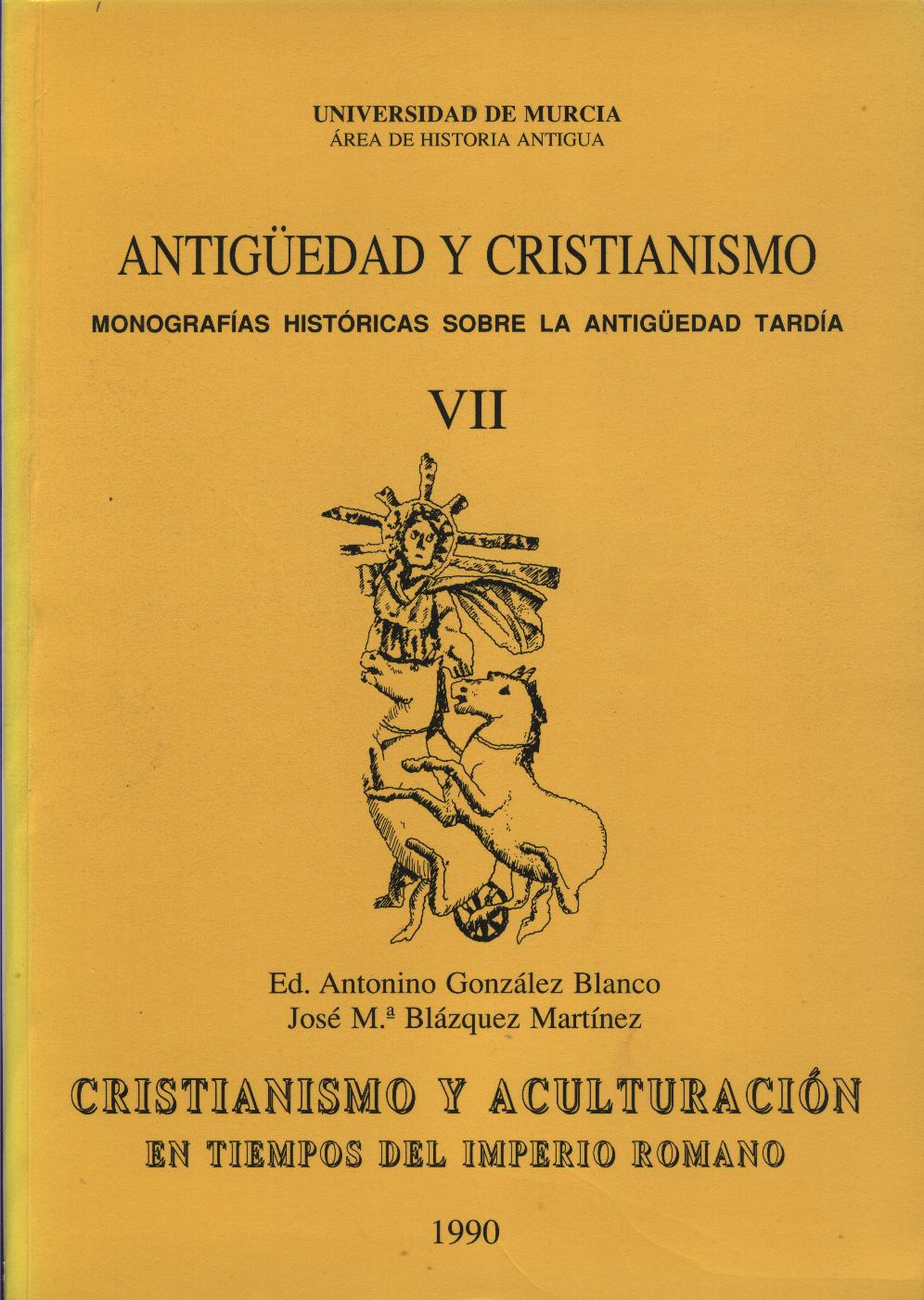Religiosidad cósmica y simbología pagana en Prisciliano
Abstract
The present investigation is interdisciplinary: beginning with a filological analysis it continues in the fields of philosophy, antropology and theology, with the proposition of clarifying the Priscilian historical position in the endoculturation of Christianism in the Later Roman Empire. Starting with an hermeneutic analysis of the literary genres of the texts atributed to Priscillianus. Analyses the attitude of this author opposite that of the Iberian and Roman culture (traditio paterna, philosophia mundi, historia saecuU, opera mundi), following step by step the accusations of the anti-Priscilian tradition in acordance with the anti-heretic rhetoric. Entering into the position of Priscillianus facing the culture centered on his vision of the «symbola et formae idolicae, imprompta et signa visibilia», the symbols, signs and names of the traditional paternal culture are in themselves limited and weak, useful at their best as «ad instructionem ingenii». Besides, due to the corruption introduced by means of sin, the world and the social and cultural structures, this same history of man has remained to be dominated by a perverse system of relations. Therefore the «cultural indications of the paternal tradition» have converted into «ties of esclavitud and blindness» (demonolatria). For Priscillianus, the novelty of the Christianism consisted in a «labuor of liberation* from these ties. Therefore, for him, after the «liberation produced by Christ» all the terrenal and historical reality returned to its «original and primitive* reality; the world converted into a place of freedom: the things, the visible signs and the rites have come to symbolize the reunion of men with the source of reality. Therefore the new «liturgia» of Priscilliano, the dance, the songs, the new aproximations to Nature «disenchanted and liberated from the spell of the Devil», and the free search for the infinite «ways» and means of God to reveal Himself to man, that reach further than «iter securum catholicae disposotionis» (and for this reason the rebirth of the native cultures in the NW of Hispania. The work of Priscillianus appears from this philosphical and theological perspective as that of a reformer of the Church, of the culture and of the society: it centers the opposition between the «historia saecularis» and the «historia prophetica». From this perspective, the Trinity and Christological theology of Priscillianus appears as the metaphysical basis of his ecclesiological and social position: the negation of all subordination before the divine persons and the oneness of the spirit during its comunication with man gives base to a society «between iguals and free man», with numerous «means of comunication», such as presentation and comunications of God by way of visible signs. The new vision of the culture implies a newstructuration of the society, a change of the old values based on the «traditio paterna» or «signa mundi» (hierarchization, limits and ties, money and prestige), and new relations in the «convesatio mundi» . The study finishes analysing the social consequences and specifically the position of «the rich» in the Priscillian society.
Downloads
-
Abstract394
-
PDF (Español (España))684
1. Los autores ceden de forma no exclusiva a la revista los derechos de explotación (reproducción, distribución, comunicación y transformación).
2. Las obras que se publican en esta revista están sujetas a la licencia Attribution-ShareAlike 4.0 International (CC By SA 4.0). Por lo que se pueden copiar, usar, difundir, transmitir y exponer públicamente, siempre que:
i) se cite la autoría y la fuente original de su publicación (revista, editorial y URL de la obra), permitiendo así su reconocimiento.
ii) se permite remezclar, transfromar o crear a partir del material mientras se mantenga la misma licencia del original.
Nota: Los artículos anteriores a 2022 muestran incorrectamente la licencia CC by SA en la página de resumen. Están bajo una licencia CC by NC ND tal y como se incluye en los pdfs de los artículos. Los artículos publicados en 2022 y después están bajo la licencia CC by SA.

3. Condiciones de auto-archivo. Se permite y se anima a los autores a difundir electrónicamente las versiones pre-print (versión antes de ser evaluada) y/o post-print (versión evaluada y aceptada para su publicación) de sus obras antes de su publicación, ya que favorece su circulación y difusión más temprana y con ello un posible aumento en su citación y alcance entre la comunidad académica. Color RoMEO: verde.
























